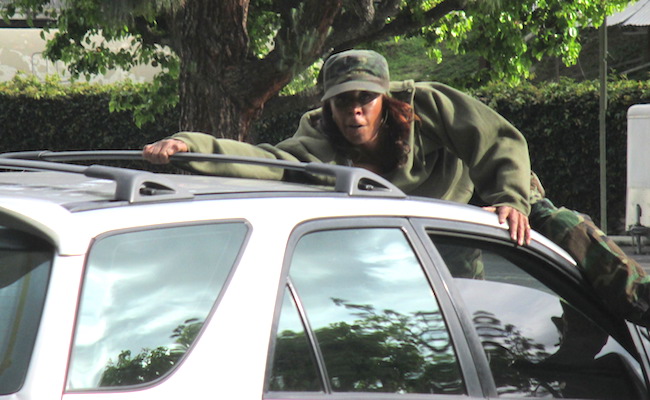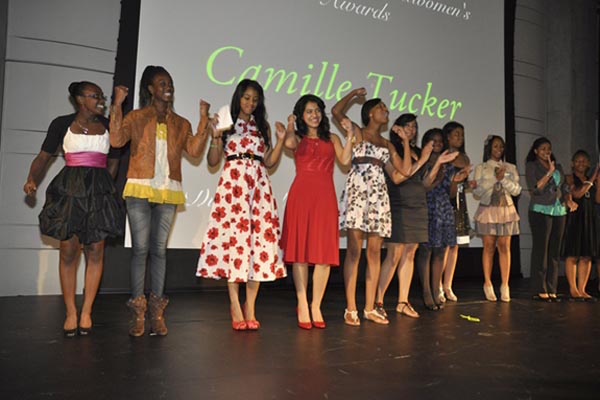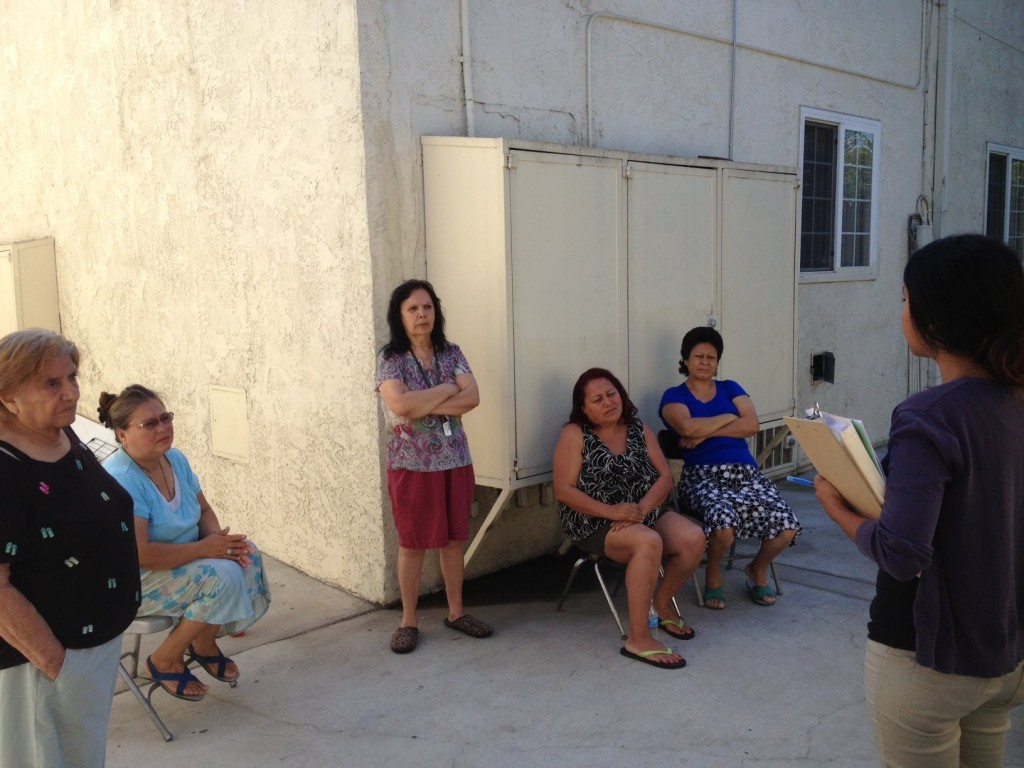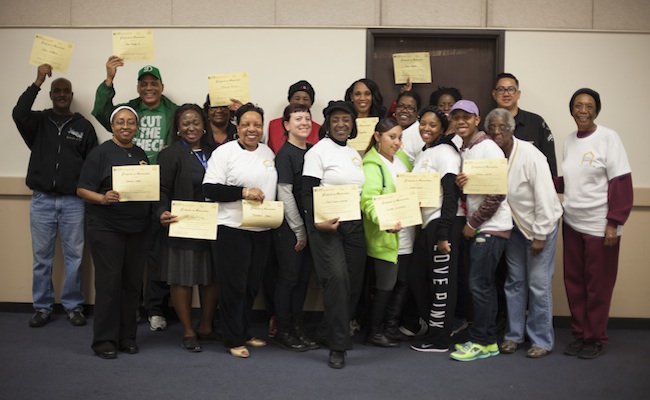By
Shawnte Passmore | LA Wave (text)
Gary McCarthy | LA Wave (photo and video)
Kevin Tsukii | Intersections South LA (video)
Deepa Fernandes | KPCC (audio)
Susanica Tam | KPCC (photo)
This article was produced for Watts Revisited, a multimedia project launched by the USC Annenberg School for Communication and Journalism that explores challenges facing South L.A. as we commemorate the 50th anniversary of the 1965 Watts Riots. Learn more at www.wattsrevisited.com.
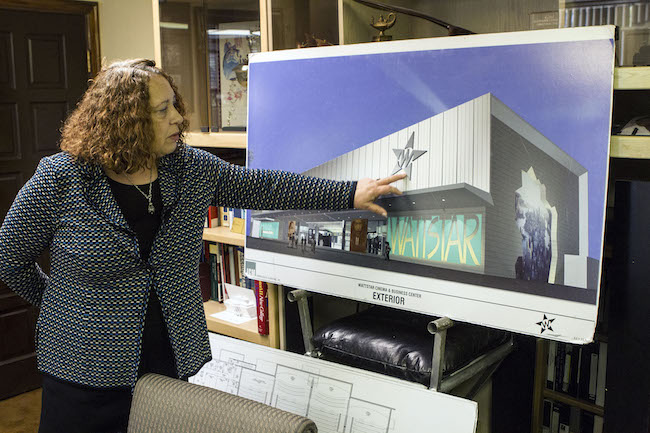
Barbara Stanton stands in front of a rendition of the Wattstar Theatre. | Photo by Gary McCarthy for LA Wave
For community stakeholders interested in transforming vacant lots, it may seem easier to clean up blighted areas than to change public opinion about the area of South Los Angeles widely known for its infamous riots. Yet, several community-based organizations are determined to do both.
Barbara J. Stanton grew up in a different kind of Watts, a place that had plenty of stores to shop along 103rd Street and a movie theatre before the riots or as locals call it – Watts Rebellion – broke out Aug. 11, 1965.
After the rioters looted and burned 600 buildings in Watts and neighboring communities, business owners were slow to return, if they did at all. The only movie theatre in town did not return.
For over 20 years, Stanton has been trying to bring a theatre back to the area but with a twist: featuring an educational and job training facility for those wishing to work behind the scenes in the entertainment industry. Her nonprofit organization, Watts Cinema and Education Center (WCEC), expects to hold a ground-breaking ceremony before September in a vacant lot on Graham Avenue next to a Metro Blue Line station. [Read more…]









